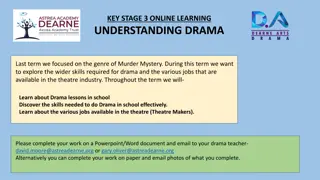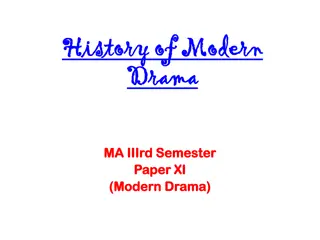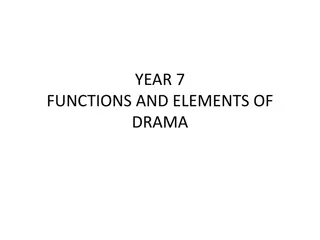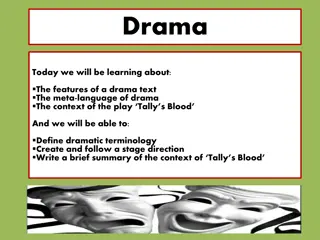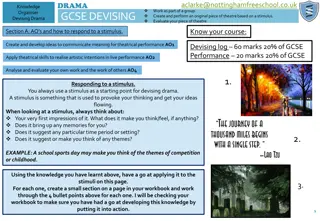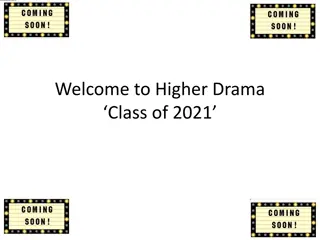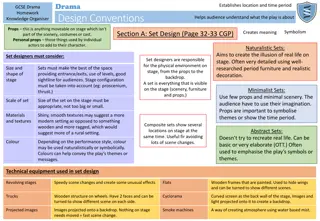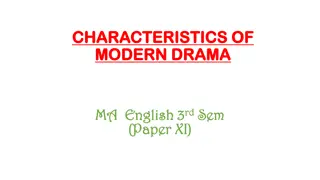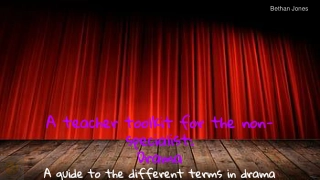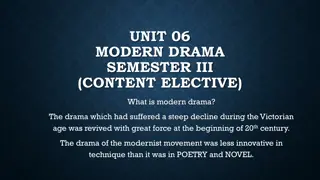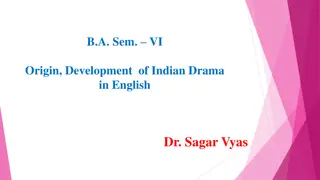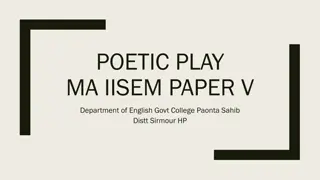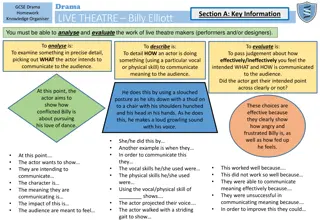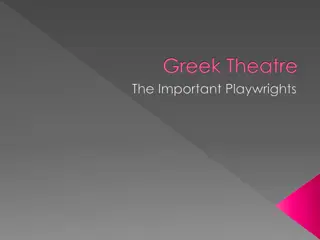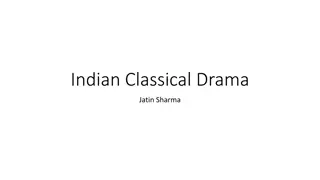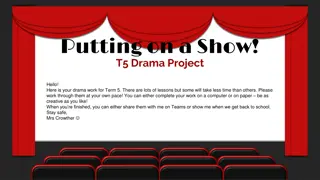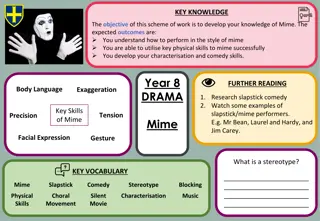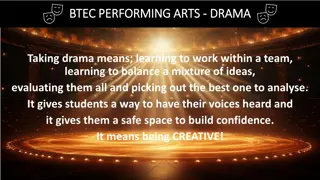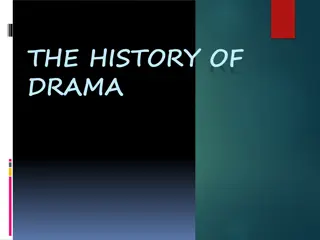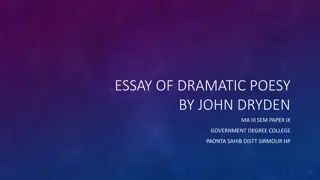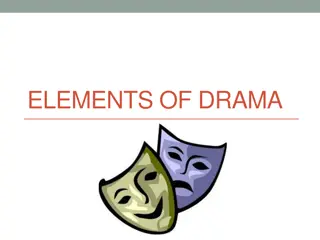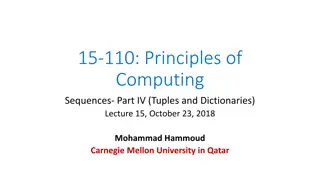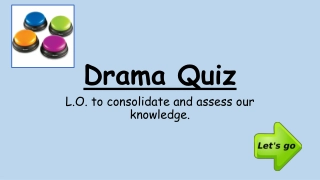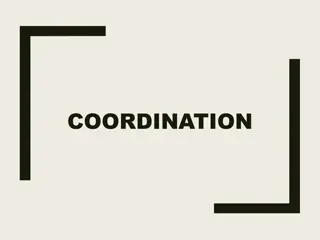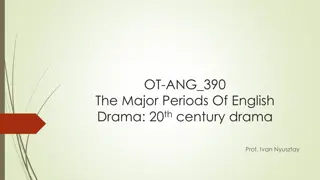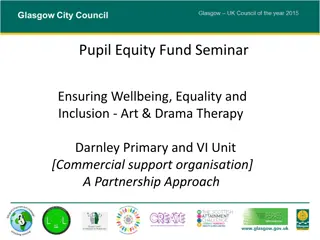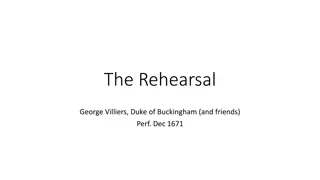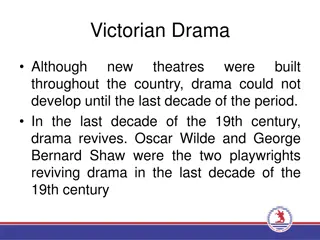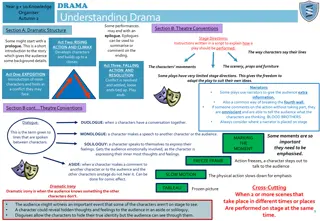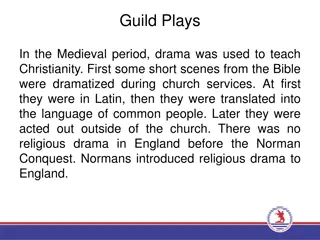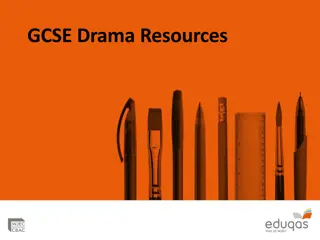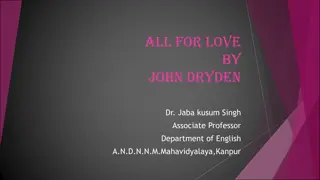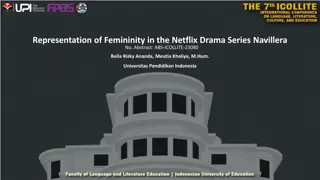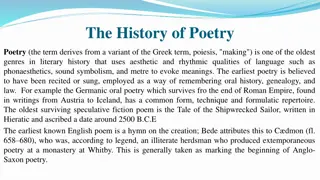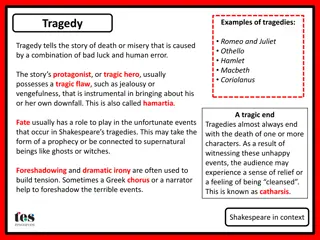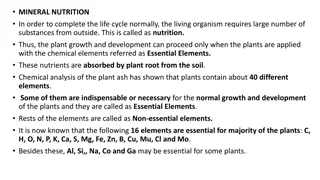Understanding Drama: Elements, Types, and Examples
Drama is a captivating form of literature brought to life by actors on stage. Originating in ancient Greece, drama encompasses key elements like plot, characters, setting, dialogue, and theme. The main types of drama include tragedy, comedy, tragicomedy, and historical drama, each offering unique storytelling approaches. Examples like "As You Like It" by Shakespeare showcase the breadth and depth of dramatic expression throughout history.
Download Presentation

Please find below an Image/Link to download the presentation.
The content on the website is provided AS IS for your information and personal use only. It may not be sold, licensed, or shared on other websites without obtaining consent from the author. Download presentation by click this link. If you encounter any issues during the download, it is possible that the publisher has removed the file from their server.
E N D
Presentation Transcript
Introduction to Drama and 16th Century Drama Prep. By: Akam R. Mohammed 10/9/2023
What is Drama? Drama is a form of literature that is intended to be performed by actors on a stage. It combines elements of plot, character, dialogue, and setting to tell a story and convey themes to an audience through the medium of performance.
550 BC Was the period that Greek theatre began flourishing
Origins of drama Greece Italy
Elements of Drama Drama has some key elements. Without them, it can not exist. The elements are:
Elements of Drama Setting Plot Characters Dialogue Theme
Elements of Drama: Plot: The sequence of events in a play, including the conflict and resolution. Character: The individuals who populate the story and drive the plot forward. Setting: The time and place in which the events of the play occur. Dialogue: The spoken words of the characters, often used to reveal their thoughts, emotions, and motivations. Theme: The central ideas or messages explored in a play, often reflecting aspects of human experience or society.
All the world is a stage, and all the men and women merely players. William Shakespeare
Types of Drama: Tragedy Comedy Tragicomedy Historical Drama
Types of Drama: Tragedy: A type of drama that typically ends in the downfall or death of the main character, often due to their own flaws. Comedy: A genre of drama characterized by humor, happy endings, and the resolution of conflicts. Tragicomedy: A blend of tragedy and comedy, often featuring elements of both seriousness and humor. Historical Drama: A genre that portrays historical events and figures, often with a focus on political or social themes.
Examples: Comedy Tragedy Tragicomedy As You Like It by William Shakespeare Hamlet by William Shakespeare The Merchant of Venice by William Shakespeare The Winter s Tale by William Shakespare The Alchemist by Ben Jonson Doctor Faustus by Christopher Marlow
Historical Context of the 16th Century - The Renaissance: The 16th century, often referred to as the Renaissance, was a period of profound change and revival in Europe. This era spanned roughly from the early 14th century to the late 16th century and is characterized by several key developments:
Historical Context of the 16th Century - The Renaissance: 1- Intellectual Revival: The Renaissance witnessed a revival of interest in classical learning and a return to the ideas of ancient Greece and Rome. Scholars began to study and translate classical texts, leading to the spreading of knowledge. 2- Humanism: Humanism emerged as a dominant intellectual movement, emphasizing the value of human potential, creativity, and individualism. Humanists promoted the study of the liberal arts, including literature, philosophy, and history.
Historical Context of the 16th Century - The Renaissance: 3- Scientific Advancements: The Renaissance also witnessed significant advancements in science, with figures like Copernicus and Galileo challenging established ideas about the universe. 4- Religious Reformation: The 16th century saw the Protestant Reformation, a religious movement led by figures like Martin Luther and John Calvin, which resulted in the fragmentation of the Christian Church and the establishment of Protestant denominations.
Drama in the 16th Century: Drama played a central role in the literary and cultural life of the 16th century for several reasons: 1- Literary Flourishing: The Renaissance was a period of prolific literary activity. The renewed interest in classical texts, particularly the works of ancient Greek and Roman playwrights like Sophocles and Seneca, inspired writers to create new dramatic works. 2- Theater as Entertainment: The 16th century witnessed the emergence of professional theaters and acting companies. The public's appetite for entertainment led to the construction of purpose-built theaters like the Globe in London.
Drama in the 16th Century: 3- Prominent Playwrights: Playwrights like William Shakespeare, Christopher Marlowe, and Ben Jonson gained fame during this era. Their works continue to be celebrated as some of the greatest achievements in English literature. 4- Exploration of Human Nature: Renaissance drama often explored profound themes, including the complexities of human nature, power, love, ambition, and the human condition. These themes resonated with the intellectual and cultural climate of the time. 5- Influence of Classical Theater: Renaissance playwrights drew inspiration from the classical theater of ancient Greece and Rome, incorporating elements such as tragic heroes, poetic dialogue, and themes of fate and destiny.
Drama in the 16th Century: In summary, the 16th century Renaissance was a period of intellectual awakening, artistic innovation, and cultural transformation. Drama emerged as a vibrant and essential component of this era, reflecting the desire to explore the human experience and engage with classical ideals. The works of playwrights from this period continue to be studied, performed, and celebrated for their enduring literary and cultural significance.
Key Playwrights William Shakespeare: An iconic English playwright known for his contributions to English literature and his timeless plays. Christopher Marlowe: A renowned playwright of the Elizabethan era, known for works like "Doctor Faustus." Ben Jonson: An important contemporary of Shakespeare, known for his comedies and satirical plays
Key Theatrical Terms Monologue: A monologue is a lengthy speech delivered by a single character on stage, usually addressing other characters or the audience. Monologues are often used to convey a character's inner thoughts, emotions, or important information. Aside: An aside is a brief remark or comment made by a character directly to the audience or to another character. It is typically delivered in a lower voice or as if the character is speaking their thoughts aloud. Asides are meant to provide insight into a character's inner thoughts and are usually not heard by other characters on stage.
Key Theatrical Terms Soliloquy: A soliloquy is a dramatic speech delivered by a character who is alone on stage. Unlike a monologue, which can be addressed to others, a soliloquy is a character's private reflection or expression of their innermost thoughts and feelings. It is a way for the audience to gain insight into a character's inner world.
Key Theatrical Terms Dramatic Irony: Dramatic irony occurs when the audience possesses knowledge that the characters on stage do not. This incongruity creates tension and anticipation, as the audience is aware of events, outcomes, or information that will affect the characters' actions or decisions. Foreshadowing: Foreshadowing is a literary and dramatic technique in which hints, clues, or symbolic elements are introduced early in a story or play to suggest future events or developments. It builds anticipation and suspense for the audience
Key Theatrical Terms Protagonist: The protagonist is the central character in a play or story. They are typically the character with whom the audience sympathizes the most, and the plot often revolves around their journey, challenges, and growth. Antagonist: The antagonist is the character or force that opposes the protagonist and creates conflict in the story. Antagonists can be villains or simply characters with opposing goals or beliefs.
A look is worth a thousand words
Thanks! Do you have any questions?


